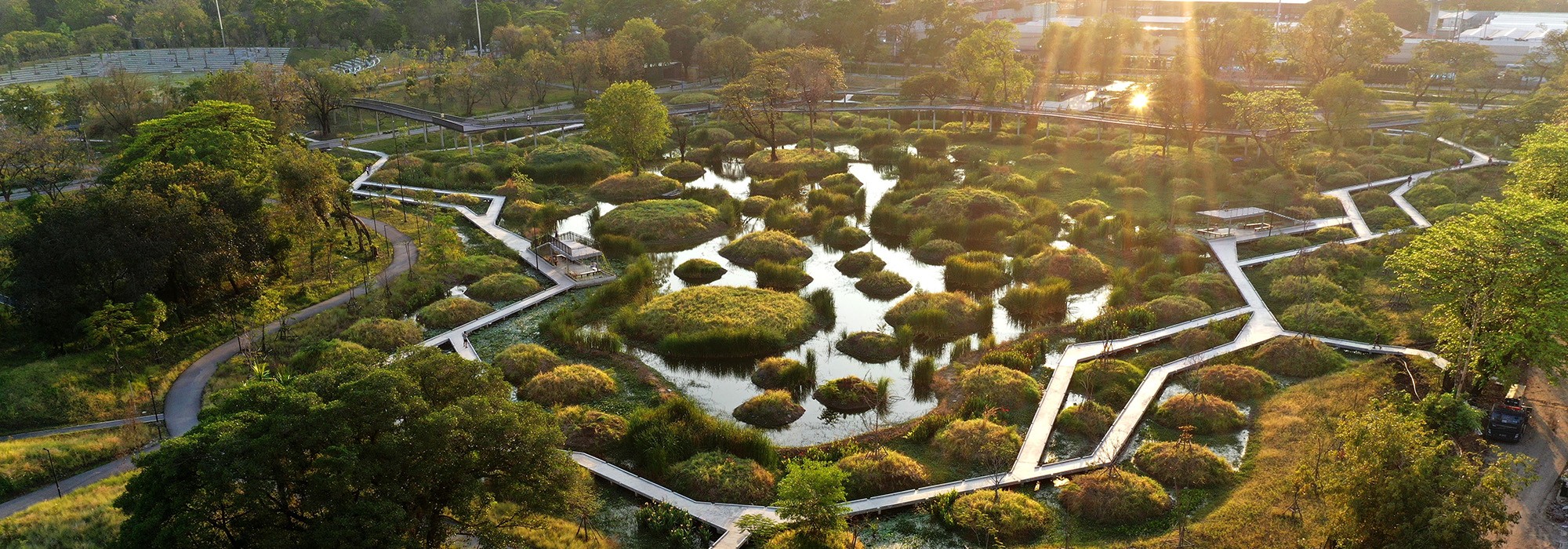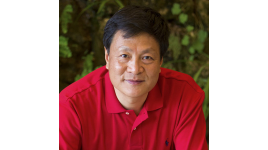Located in the city’s dense, central Khonti District, this approximately 102-acre rectilinear park was designed by Turenscape with Arsomsilp Landscape Studio and completed in 2022. The park deploys Kongjian Yu’s “sponge city” concept, transforming a former industrial site in a flood-vulnerable city like Bangkok – into a resilient landscape. Realized in just eighteen months with a limited budget, the park’s design features hundreds of mounded islands surrounded by four lakes capable of holding a million cubic meters of storm water. The lakes and wetlands also naturally filter and clean polluted water and provide wildlife habitat.
Originally a tobacco factory and brownfield owned by Thailand’s royal family, the site was nearly completely paved over, dominated by former-industrial structures, and interspersed with canopy trees. Framed by a canal to the north, Benjakitti Park (established in 1992) to the east, and an expressway to the west, the new park features four prominent lakes, laid out like stepping-stones, each separated by east-west oriented former factory roads. These biomorphically-shaped water features were created using cut-and-fill techniques and are dotted with mounded islands, each composed of repurposed concrete excavated from the site, and featuring existing and recently-established canopy trees. A network of meandering, angular boardwalks encircle each lake, allowing visitors to traverse their verdant edges. Elevated walkways moving through acacia tree canopies similarly frame each lake, affording borrowed views of the park and nearby cityscape.
The park’s primary entrance, situated on its western edge, leads east to a plaza, flanked by symmetrical berms, to an approximately 275-foot diameter turf amphitheater. The circular amphitheater and reflecting pool sited at its eastern edge echo the shapes of the islands that populate the four lakes. Former-industrial structures, clustered in the northern and southern portions of the site, were repurposed as a sports center and museum respectively. Portions of the historic structures’ roofs were removed, inviting in light and air to support new plantings.









